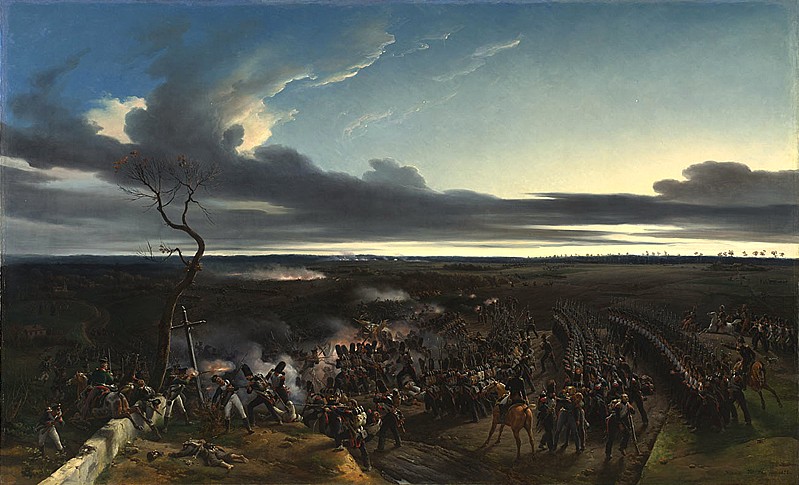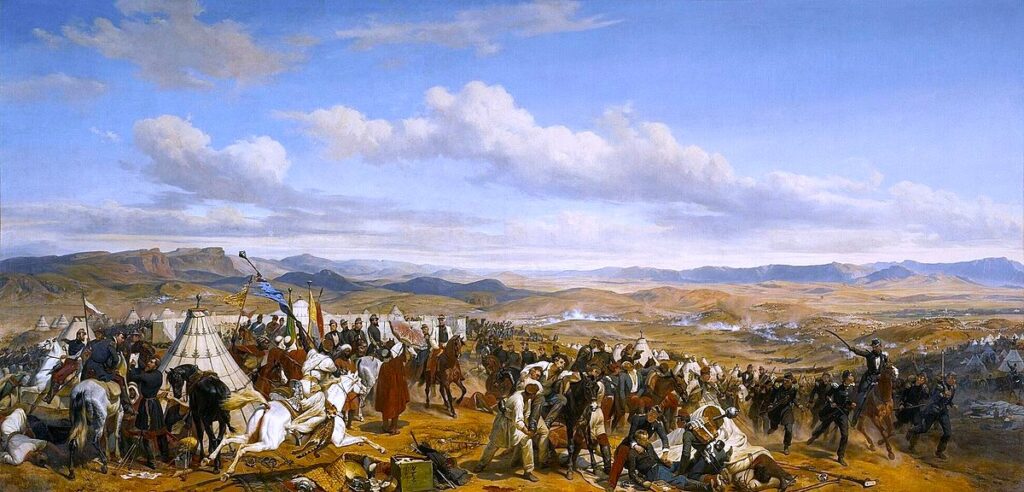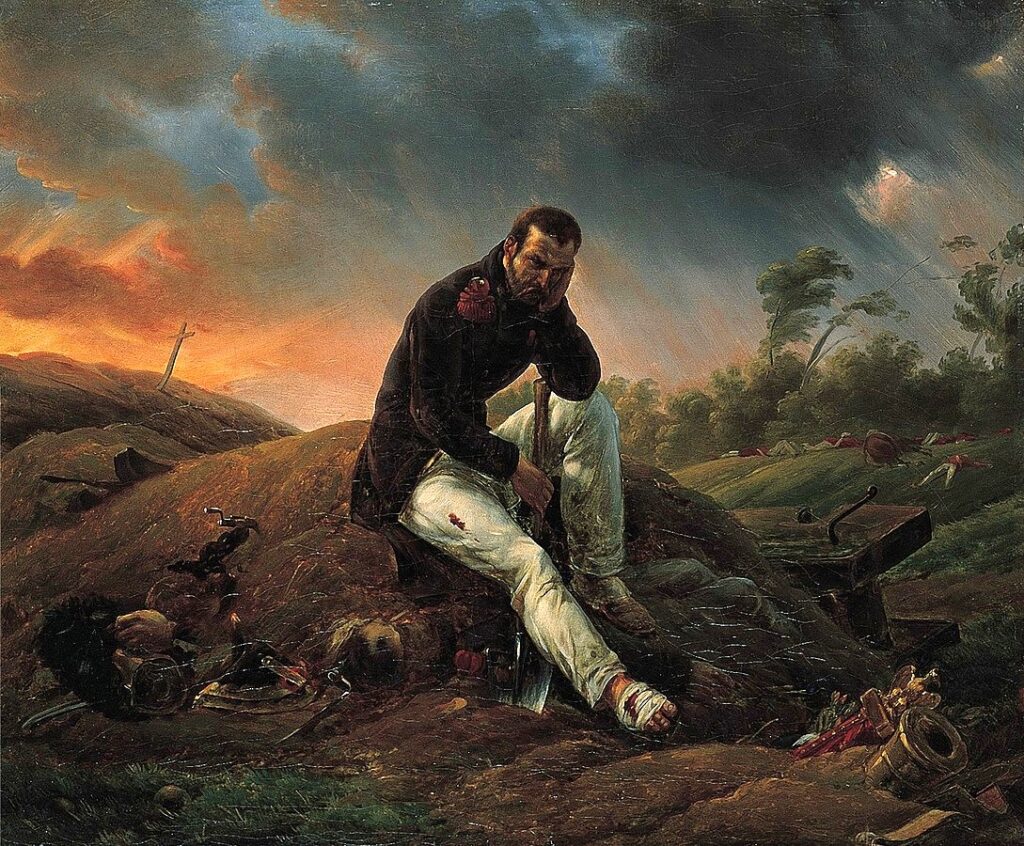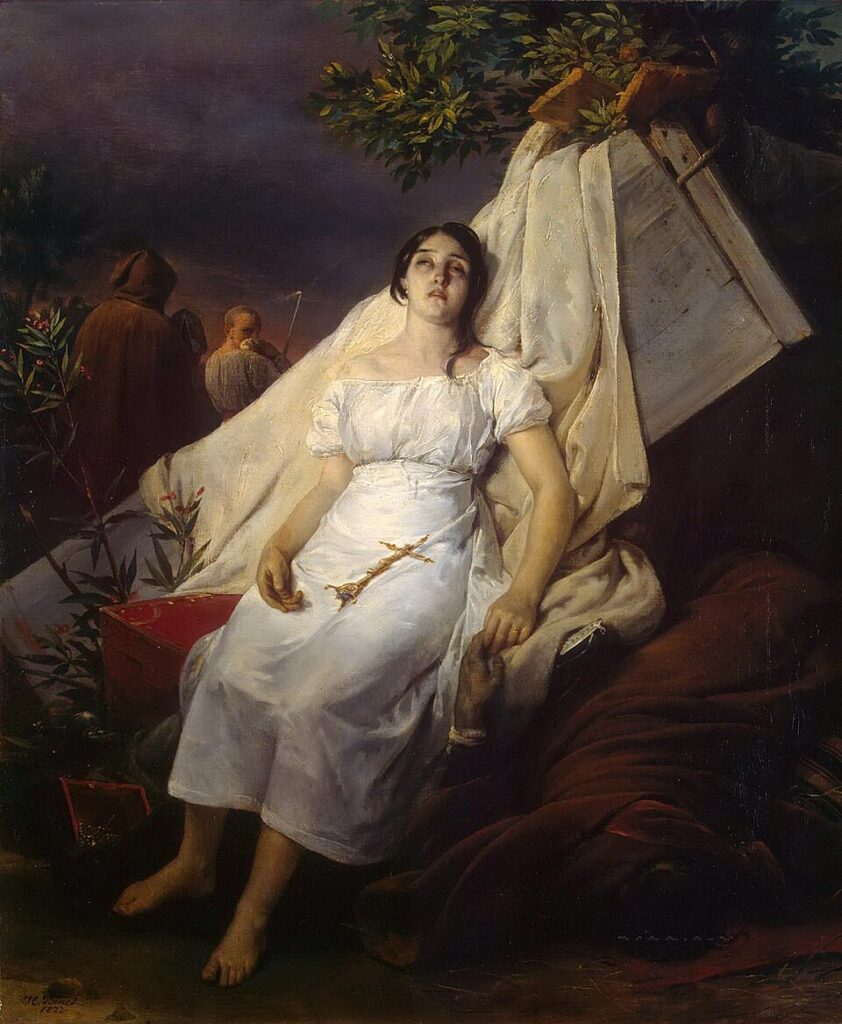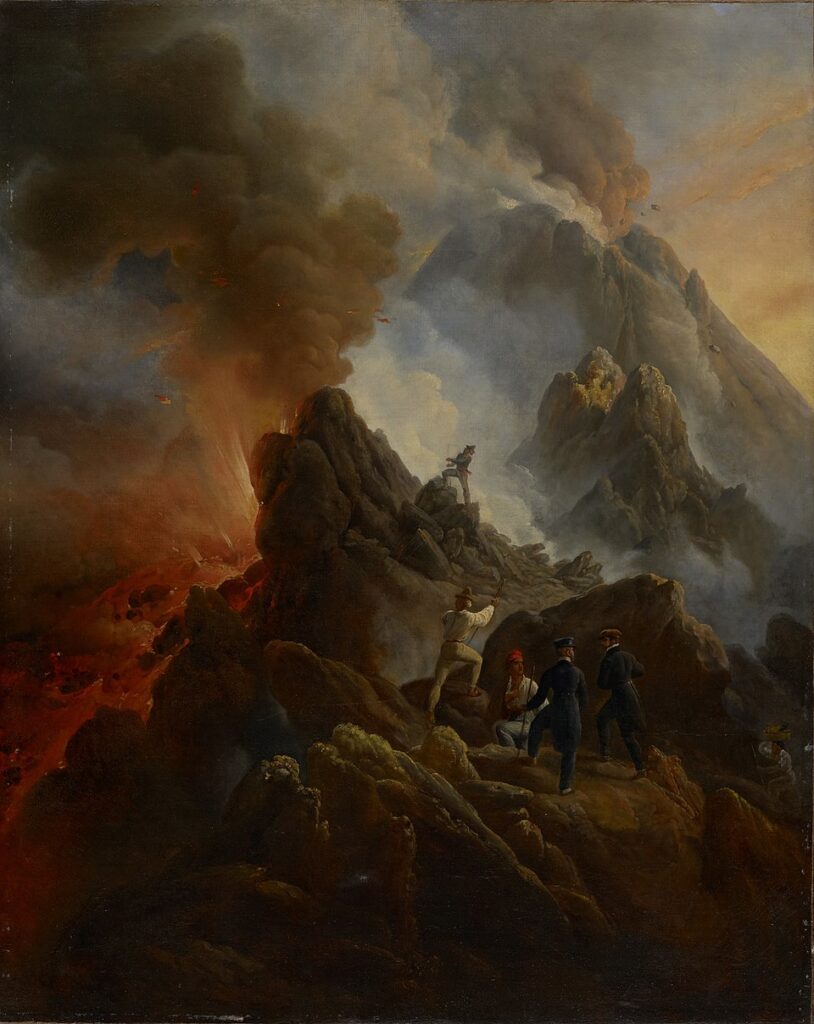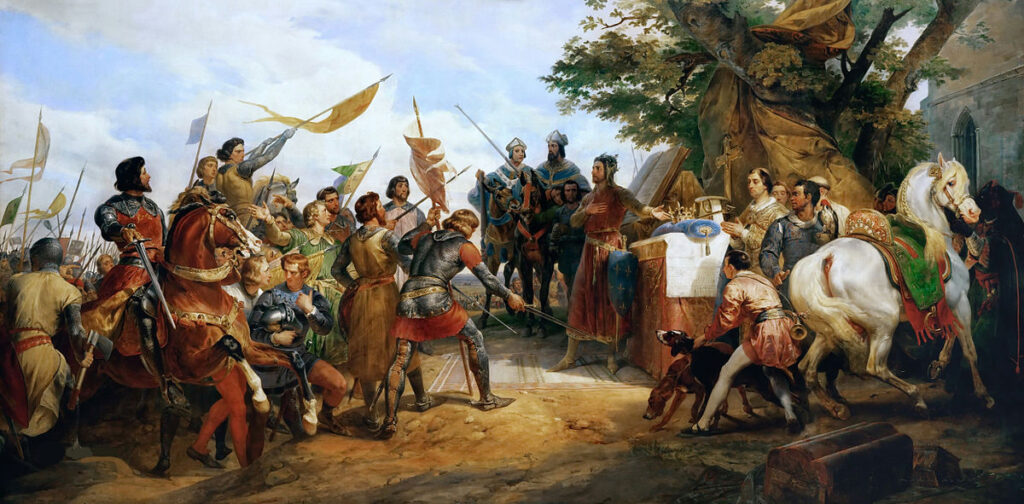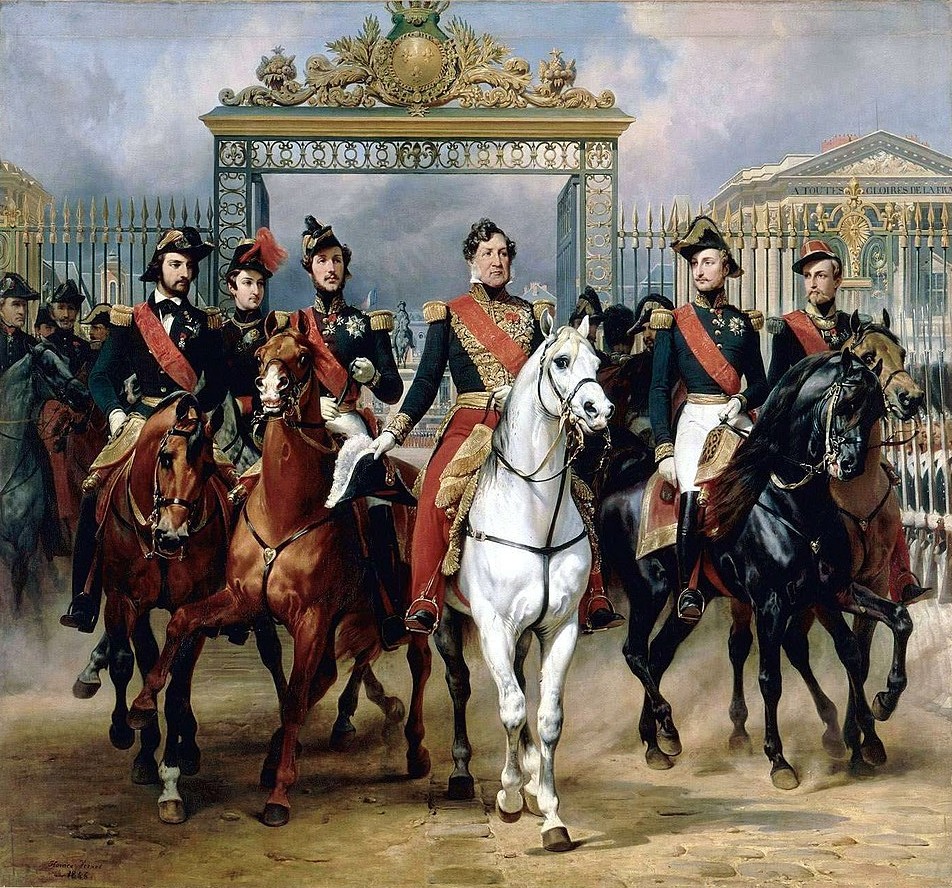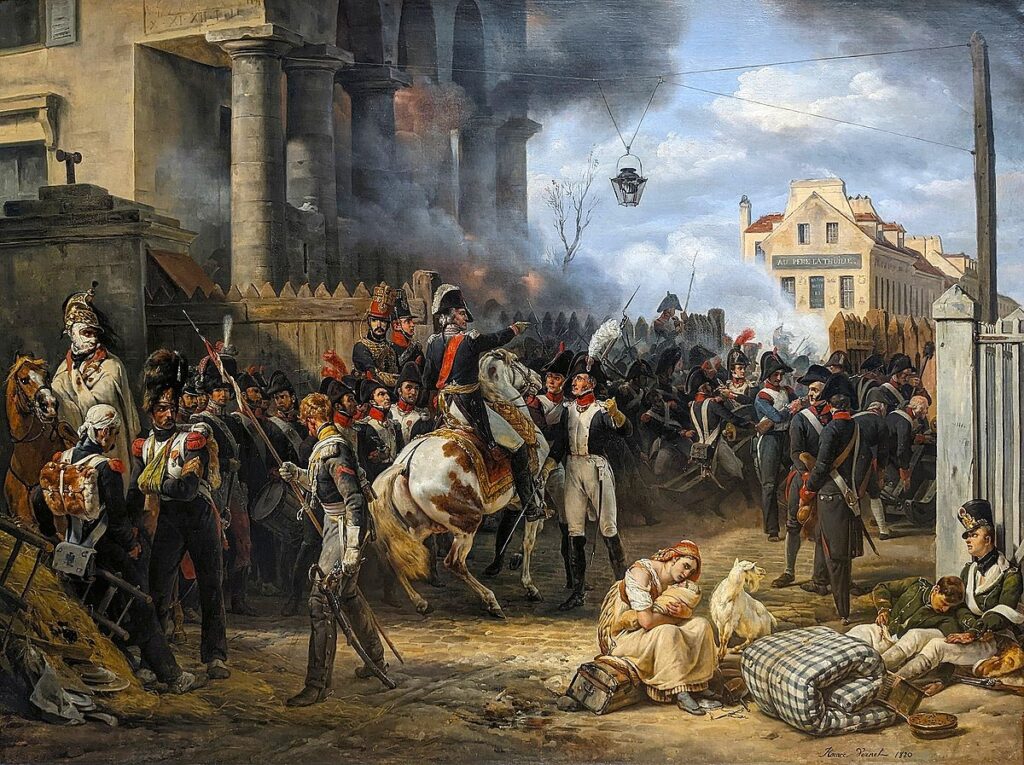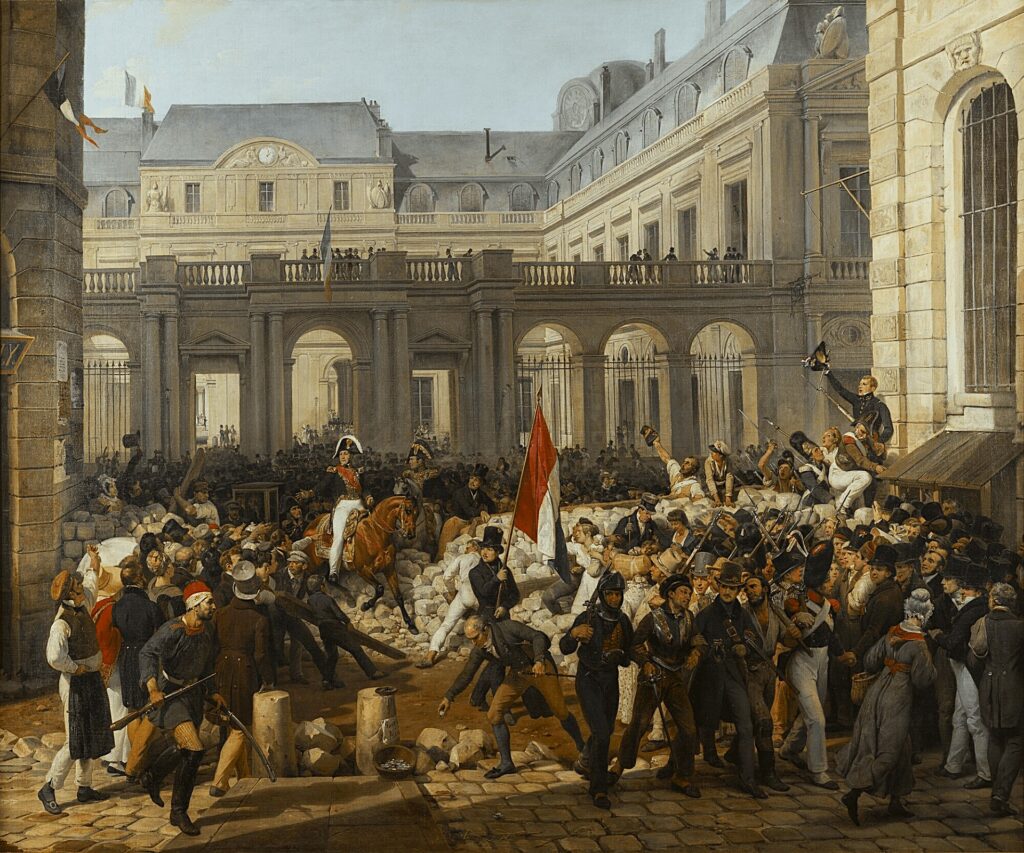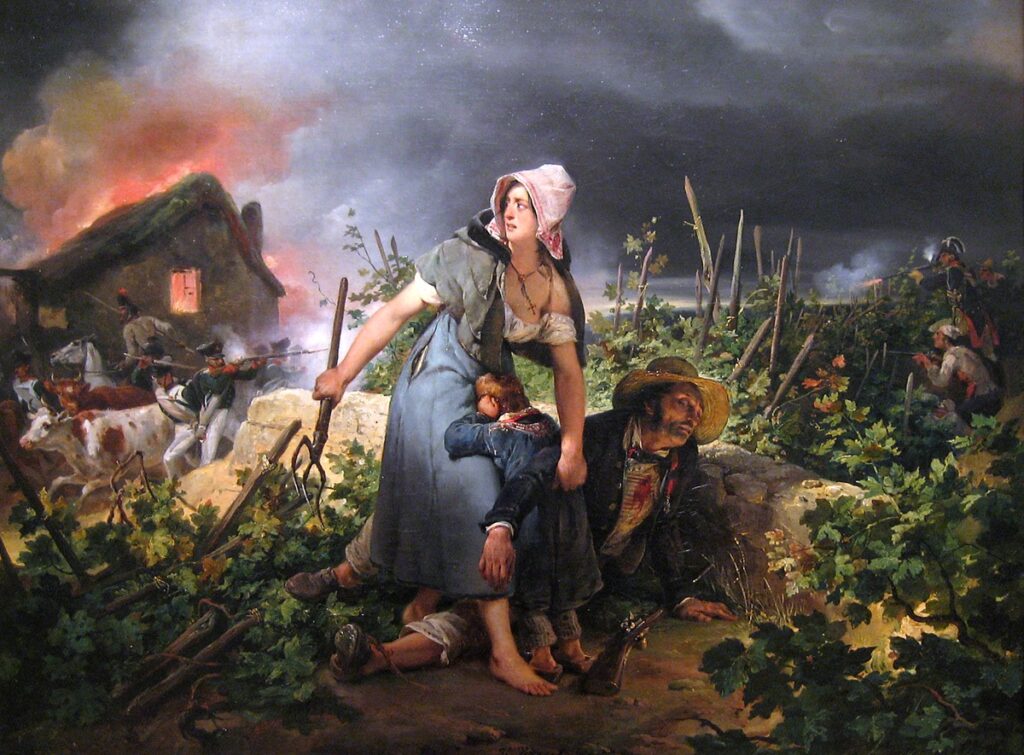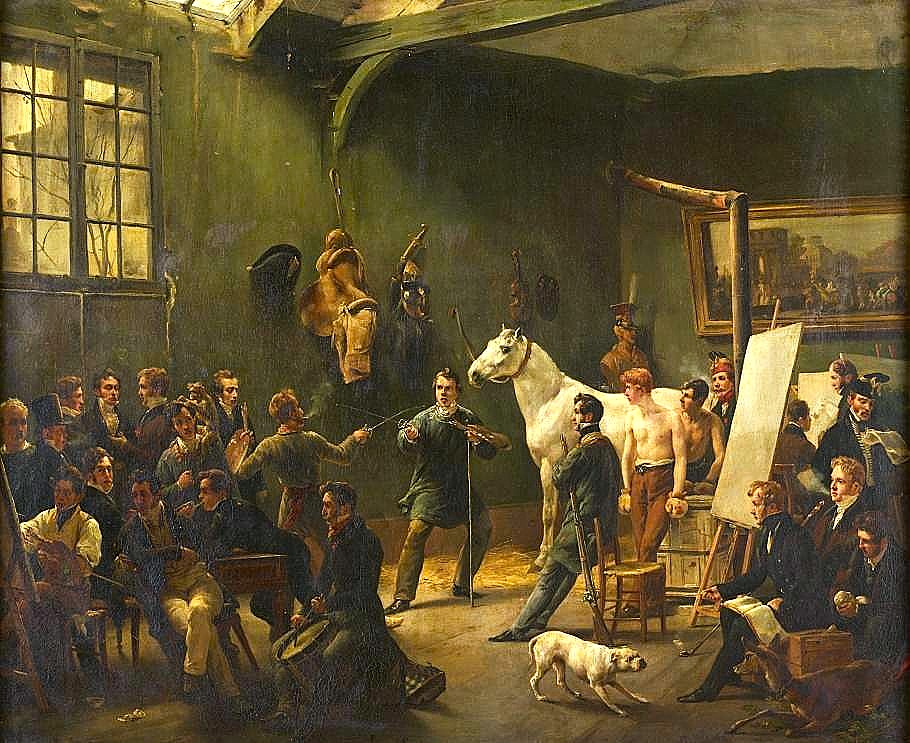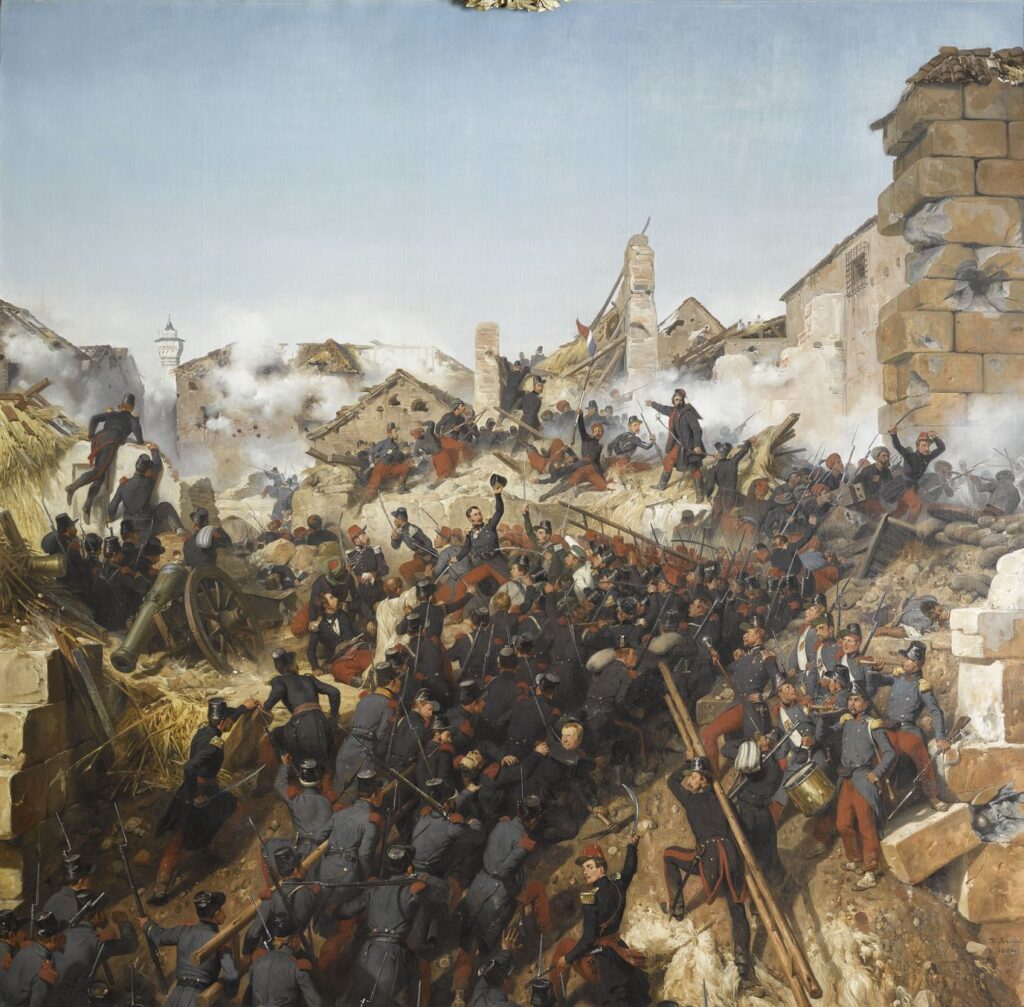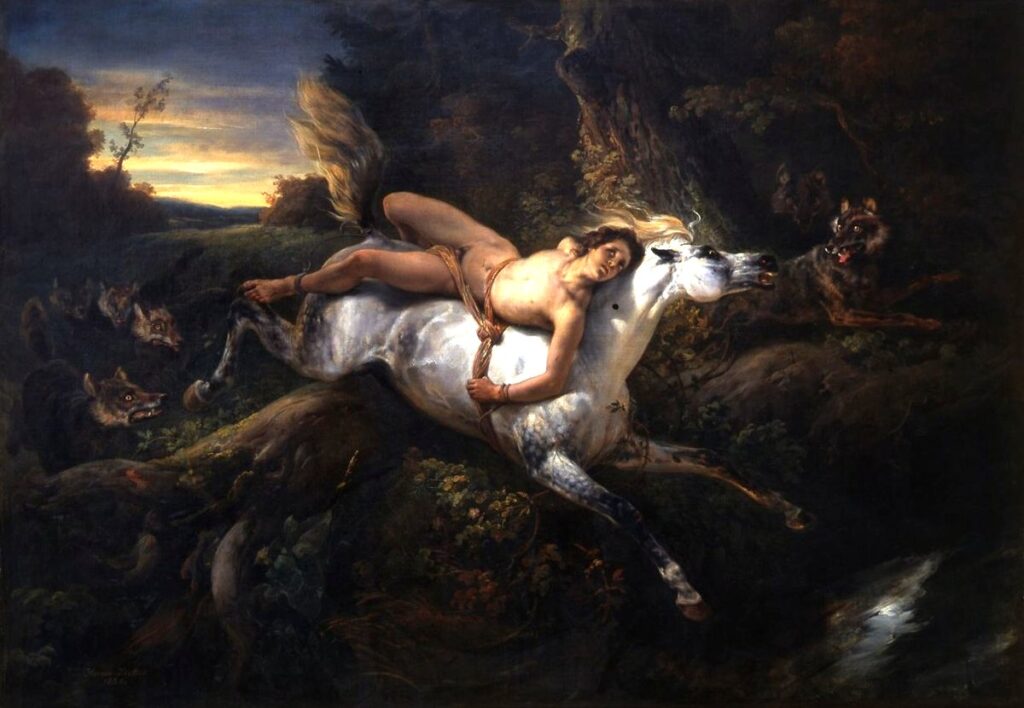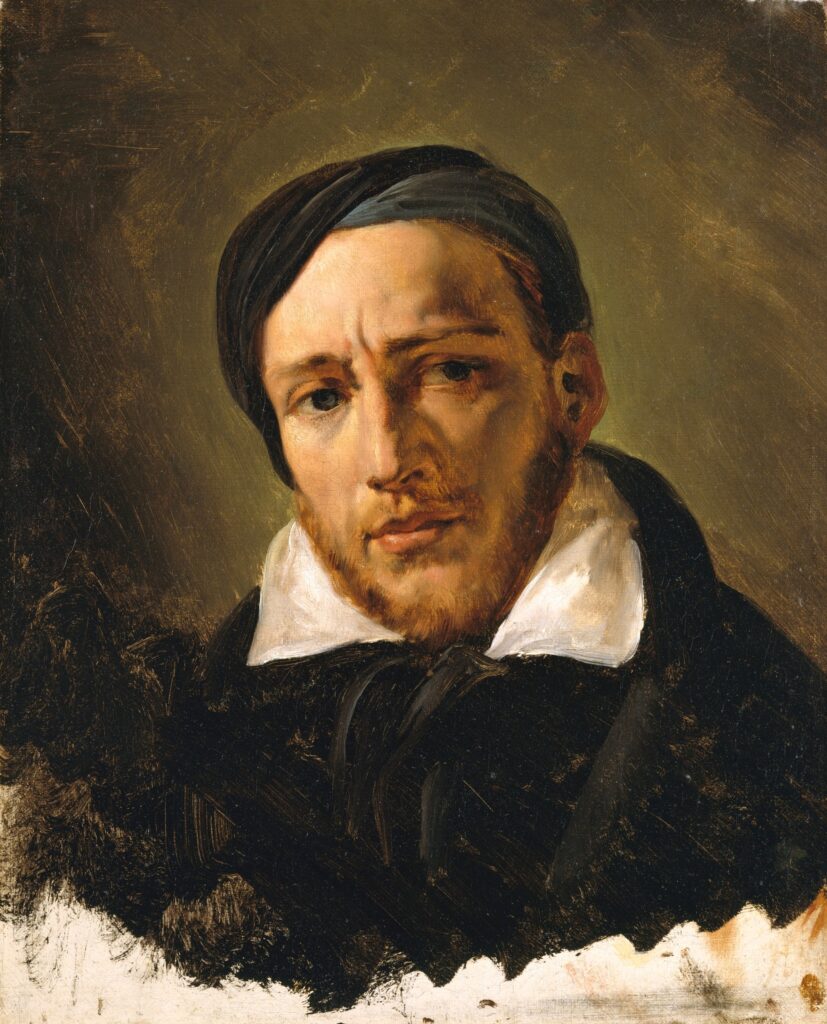Meta-Impressionism / other artists:
Horace Vernet
1789 – 1863
a painter of battlefields
Introduction:
This page renders some info and paintings on Emile-Jean-Horace Vernet (1789-1863). He is mainly known for the many historical battlefields he made. Namely more recent onces. He did so with historical accuracy, without heroism and propaganda. He once said “I am a painter of history, sire, and I will not violate the truth” (iR3). He mostly showed large masses of soldiers fighting and dying, depicting war in all its chaos and savagery. Many of these battles scenes are now in the Musée Nationale in the Château de Versailles, more specific in the Museum of the History of France (=M195;R322,p225).
Horace Vernet: elements of Romanticism:
Vernet his battlefields are seen as Romantic pictures in the sense that they evoked strong emotions (R322,p207). Vernet also depicted the perishability of humans (when victims of an epidemic) and the smallness of humans facing impressive natural forces (such as the eruption of a vulcano). Typical Romantic themes. But, his journalistic approach make him difficult to categorize (R322,p225).
Vernet also depicted several oriental scenes. From 1839-48 he made trips to Egypt, Syria and Algers.
Horace Vernet; a highly awarded and established artist:
Horace received at the Salon of 1812 a 1st class medal (for History). He was appointed at the Légion d’Honneur as Chevalier in 1814, as Officier in 1825 and as Commandeur in 1842. He was appointed as member of l’Institut in 1826. He was appointed director of the French Academy in Rome, from 1828/29 to 1835 (R239,p399;iR3). He had several pupils, including the Dutch painter Jozef Israëls. (iR1;iR3;iR5;R231)
Vernet also received several commissions during his life (R322,p226;iR6). Here below you will find two examples, commissioned by the successive kings Charles X (reign 1824-30) and Louis Philippe (1830-48).
Horace Vernet at the Salon:
Horace received at the Salon of 1812 a 1st class medal (for History); a work that is now lost. He exhibited regularly at the Salon. Though in 1822 two paintings were rejected. In 1824 he showed almost 40 works.
Note: more info will follow.
Horace Vernet at the Exposition Universelle:
At the Exposition Universelle of 1855 Horace Vernet showed 22! paintings.
Posthumously works were shown at the Centennial exposition in 1889 (4 paintings) and 1900 (2 or 3 paintings).
Horace Vernet at the Ecole des Beaux-Arts:
In 1898 Vernet was honoured with a posthumous exhibition at the École des Beaux-arts.
Note: more info will follow.
Sources:
My main sources are: My main sources are Rauch (2000=R293,p399-412); Petra ten-Doesschate Chu (2012=R322,p207); Krausse (R172,p60-62); Schilderkunst van A tot Z (1987=R13,p734); Walther (2013=R3); Roberts (1965=R61); WikiPedia (iR3;iR5); WikiMedia (iR6); the Salon database (iR1); catalogues of the Exposition Universelles (R231). See the link for other general References (=Rx), to the internet references (=iRx) and Musea (=M). See links for practical hints and abbreviations and for the subscription of the paintings.
Additional references:
Recommanded citation: “Meta-Impressionism: Horace Vernet (1789-1863) a painter of historical battlefields. Last modified 2025/10/03. https://www.impressionism.nl/horace-vernet-1789-1863/”
